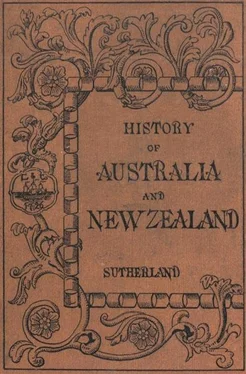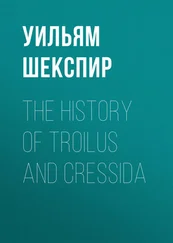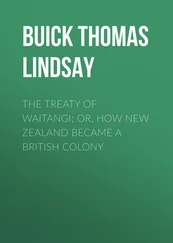4. Rush to the Goldfield.—The excitement throughout the colony now became intense: workmen quitted their employment, shepherds deserted their flocks, shopkeepers closed their stores, and a great tide of fortune-seekers pressed onward, day by day, to the west. Most of these had sold everything they possessed, in order to make up a little bundle of necessary articles. Yet there were very many but ill-provided for a lengthened stay; they hurried along the road with the fallacious idea that gold was simply to be shovelled into bags and carted to Sydney. But when they came upon the scene, and saw that in the case of most of them it would only be after weeks and months of severe and constant toil that they could be rich, they grew faint-hearted, lounged for a week or two on the diggings, and then started for home again; so that, for some time, there was a counter-current of grumbling and discontented men passing back to Sydney by the road. These men thought themselves befooled by Hargraves, and it might, perhaps, have cost him his life had he fallen into their hands. On his trip to Sydney he was careful to disguise himself, to avoid their threatened revenge. He received from Government, however, his preliminary reward of £500, and, in after years, New South Wales voted him the sum of £10,000, which was supplemented by a present of £2,381 from Victoria. Other profits also accrued to Hargraves; so that he was, in the end, recompensed for his toil and trouble with a handsome competency.
The gloomy reports of returning diggers checked for a time the flow of people to the west; but in the month of July an aboriginal shepherd on a station near Bathurst burst in upon his master while seated at dinner, his eyes glistening with excitement. He was only able to stammer out: “Oh, massa, white man find little fellow, me find big fellow”. When his master drove him in a buggy through the forest, the shepherd pointed to where a hundredweight of gold was sticking out from a rock. It was so heavy that they had to chop it in two with their axes before they could lift it into the buggy. It was afterwards sold for £4,000. So splendid a prize, obtained in so easy a manner, was a temptation too dazzling to be resisted; and the stream of people along the Bathurst road was now tenfold denser than before.
5. Government Regulations.—When the population on the goldfields began to grow numerous, the Government found it necessary to make arrangements for the preservation of law and order. A commissioner was appointed, who was to act as a magistrate; he was to be assisted by a small body of police, and was to take charge of the gold escorts. As the lands on which the gold was being found were the public property of the colony, it was thought to be but just that the community, as a whole, should participate, to some small extent, in the wealth raised from them; and the order was, therefore, issued that diggers should in all cases take out licences before seeking for gold, and should pay for them at the rate of thirty shillings per month.
New diggings were, from time to time, opened up, and fresh crowds of eager men constantly pressed towards them, leaving the towns deserted and the neighbouring colonies greatly reduced in population. For some months the Turon River was the favourite; at one time it had no less than ten thousand men upon its banks. At Ophir, and Braidwood, and Maroo the most industrious and sagacious miners were generally rewarded by the discovery of fine pieces of gold, for which the Californian name of “nuggets” now began to be extensively used.
6. Gold in Victoria.—When Latrobe was sworn in to fill the office of Governor of Victoria on the 16th July, 1851, it appeared probable that he would soon have but a small community to rule over. So great were the numbers of those who were daily packing up their effects and setting off for the goldfields of New South Wales that Victoria seemed likely to sink into a very insignificant place on the list of Australian colonies. In alarm at this prospect, a number of the leading citizens of Melbourne on the 9th of June united to form what was called the Gold Discovery Committee, and offered a reward of £200 to the person who should give the first intimation of a paying goldfield within two hundred miles of Melbourne. Many persons set out, each in hopes of being the fortunate discoverer; and a report having been circulated that signs of gold had been seen on the Plenty Ranges, there were soon no less than two hundred persons scouring those hills, though for a long time without success. The first useful discovery in Victoria seems to have been made on 1st July, by a Californian digger named Esmond, who, like Hargraves, had entered on the search with a practical knowledge of the work. His experience had taught him the general characteristics of a country in which gold is likely to be found, and he selected Clunes as a favourable spot. He found the quartz rock of the district richly sprinkled with gold; and his discovery having been made known, several hundred people were quickly on the scene. Almost on the same day, gold was discovered by a party of six men, at Anderson’s Creek, only a few miles up the Yarra from Melbourne. It is thus difficult to determine with certainty whether or not Esmond was in reality the first discoverer; but, at any rate, he received honours and emoluments as such; and in after years the Victorian Parliament presented him with £1,000 for his services.
7. Ballarat.—On the 10th of August the Geelong newspapers announced that deposits of auriferous earth had been discovered at Buninyong, and very soon the sunny slopes of that peaceful and pastoral district were swarming with prospecting parties; the quietly browsing sheep were startled from their favourite solitudes by crowds of men, who hastened with pick and spade to break up the soil in every direction, each eager to out-strip the other in the race for wealth. This region, however, did not realise the expectations that had been formed of it, and many of the diggers began to move northwards, in the direction of Clunes. But at Clunes, also, there had been disappointment, for the gold was mostly embedded in quartz rock, and these early miners were not prepared to extract it; parties from Clunes were therefore moving southwards to Buninyong, and the two currents met on the slopes of the Yarrowee, a streamlet whose banks were afterwards famous as the Ballarat diggings. The first comers began to work at a bend in the creek, which they called Golden Point. Here, for a time, each man could easily earn from £20 to £40 a day, and crowds of people hurried to the scene. Every one selected a piece of ground, which he called his claim, and set to work to dig a hole in it; but when the bottom of the sandy layer was reached, and there seemed to be nothing but pipe-clay below, the claim was supposed to be worked out, and was straightway abandoned. However, a miner named Cavanagh determined to try an experiment, and, having entered one of these deserted claims, he dug through the layer of pipe-clay, when he had the good fortune to come suddenly upon several large deposits of grain gold. He had reached what had been in long past ages the bed of the creek, where, in every little hollow, for century after century, the flowing waters had gently deposited the gold which they had washed out of the rocks in the mountains. In many cases these “pockets,” as they were called, were found to contain gold to the value of thousands of pounds, so that very soon all the claims were carried down a few feet further, and with such success that, before a month had passed, Ballarat took rank as the richest goldfield in the world. In October there were ten thousand men at work on the Yarrowee; acre after acre was covered with circular heaps of red and yellow sand, each with its shaft in the middle, in which men were toiling beneath the ground to excavate the soil and pass it to their companions above, who quickly hurried with it to the banks of the creek, where twelve hundred “cradles,” rocked by brawny arms, were washing the sand from the gold.
Читать дальше












